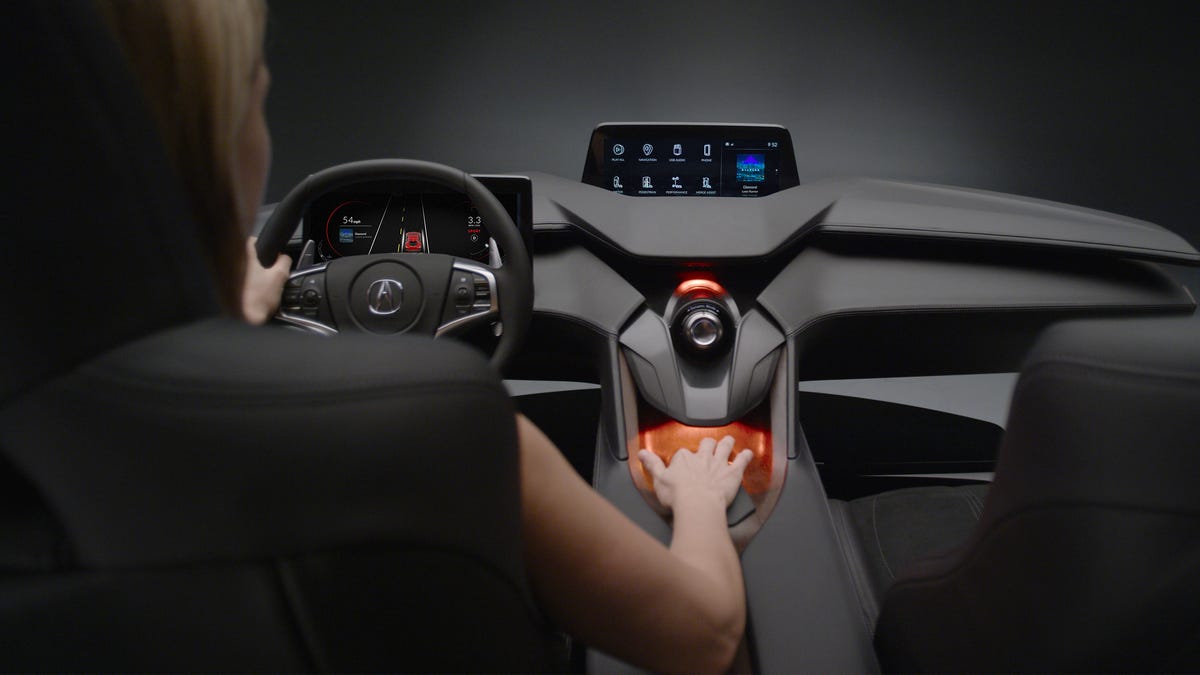Acura's Precision Cockpit concept is all about the screens
If this concept is any hint, Acura's next-gen interiors will be simple -- and simply gorgeous.

Sometimes, the simplest things are the most effective.
With all the technological doo-daddery in the automotive industry, it's getting harder to find interior designs that are simple, elegant and easy to understand. Acura 's Precision Cockpit concept bucks that trend.
Considered the follow-up to the Acura Precision concept car that arrived at last year's Detroit Auto Show , the Precision Cockpit gives us an idea about the next generation of Acura interiors. It borrows a whole bunch of inspiration from the NSX, including the mode switch, steering wheel and seats.
The look is plain, but in a good way. There's a healthy amount of wood, leather and Alcantara suede, but the various angles of the dashboard don't scream out for attention. The LED ambient lighting keeps it classy but still modern.
The real meat and potatoes of the concept lies in its screens and touchpad. The gauges are gone, and in their place is a 12.3-inch screen. A second screen sits atop the dashboard, providing your usual collection of infotainment features. Each driving mode gets its own color theme.
The touchpad used to control the system rests below the mode switch. It uses something Acura calls "absolute positioning," mimicking a touchscreen without having to pull the screen itself within the driver's limited reach. Every spot on the touchpad correlates to a spot on the dashboard screen.
Since it's a futuristic concept, it packs graphical representations of autonomous features. The screens can display other cars that the system 'sees' on the road, and it also detects pedestrians and cyclists, using artificial intelligence to chart out the presumed path of whatever's in front of the car.
Acura's Precision Cockpit also gives us a look at the next generation of its infotainment system. This Android-based system looks super clean, far better than the admittedly clunky system used currently. Acura expects it to slowly become reality over the next few years.

